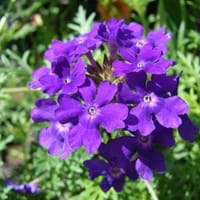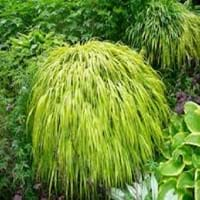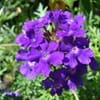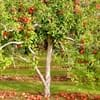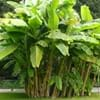Life Span
Annual
Perennial
Type
Flowering Plants
Grass
Origin
America, Europe
Japan
Types
Clump verbena, Moss verbena, Annual Verbena, Brazilian verbena, Sandpaper Verbana
Not Available
Number of Varieties
Not Available
Habitat
Forest edges, Hillside, Woods
meadows, Riverbanks, Wet Woods
USDA Hardiness Zone
3-9
5-9
AHS Heat Zone
Not Available
9 - 5
Sunset Zone
not available
1a, 1b, 2a, 2b, 3a, 3b, 4, 5, 6, 7, 8, 9, 10, 11, 12, 13, 14, 15, 16, 17, 18, 19, 20, 21, 22, 23, 24
Habit
Not Available
Clump-Forming
Flower Color
Blue, Dark Purple, Light Purple, Red, White
Blue Violet
Flower Color Modifier
Not Available
Bicolor
Fruit Color
Not Available
Purple
Leaf Color in Spring
Dark Green
Yellow, Green, Light Green
Leaf Color in Summer
Dark Green, Green
Light Green
Leaf Color in Fall
Dark Green, Green
Orange, Yellow green, Orange Red
Leaf Color in Winter
Not Available
Green, Dark Green, Not Available
Leaf Shape
Oblovate
Oblovate
Plant Season
Early Spring, Late Autumn
Spring, Summer, Fall
Sunlight
Full Sun, Partial shade
Full Sun, Partial Sun, Partial shade
Type of Soil
Well drained
Loam
The pH of Soil
Neutral, Slightly Acidic
Acidic, Neutral
Soil Drainage
Average
Well drained
Bloom Time
Early Fall, Early Summer, Fall, Late Spring, Late Summer, Summer
Late Summer, Early Fall, Fall
Tolerances
Not Available
Dry soil, Shallow soil
Where to Plant?
Container, Ground
Ground
How to Plant?
Seedlings, Stem Planting
From Rhizomes
Plant Maintenance
Medium
Medium
Watering Requirements
Do not water frequently, Medium, Never Over-water, Requires regular watering, Requires watering in the growing season
Keep ground moist
In Summer
Lots of watering
Lots of watering
In Spring
Moderate
Consistently
In Winter
Average Water
Adequately
Soil pH
Neutral, Slightly Acidic
Acidic, Neutral
Soil Type
Well drained
Loam
Soil Drainage Capacity
Average
Well drained
Sun Exposure
Full Sun, Partial shade
Full Sun, Partial Sun, Partial shade
Pruning
Prune for shortening long shoots, Prune if you want to improve plant shape, Prune lower leaves, Prune regularly, Prune to control growth
Prune grass to maintain level, Prune if you want to improve plant shape
Fertilizers
All-Purpose Liquid Fertilizer
organic fertlizers
Pests and Diseases
Not Available
Not Available
Plant Tolerance
Drought
Shade areas, Shallow soil, Wet Site
Flowers
Yes
Insignificant
Flower Petal Number
Single
Single
Showy Foliage
Not Available
Yes
Foliage Texture
Not Available
Medium
Foliage Sheen
Not Available
Matte
Invasive
Not Available
No
Attracts
Butterflies
Ants, Beetles, Caterpillar
Allergy
Arthritis, Asthma, Chest Pain, Itchiness, Whooping Cough
allergic conjunctivitis, Asthma, Rash
Aesthetic Uses
Showy Purposes
Beautification, Ground Cover
Beauty Benefits
Not Available
Not Available
Environmental Uses
Air purification
Provides ground cover, Shadow Tree
Medicinal Uses
Arthritis, Gallbladder Diseases, Itching, Jaundice, Joint pain, Kidney problems, Liver problems, Metabolic disorders, Sore throat, Upset stomach, Urinary tract problems
Acne, Aging, Laxative
Part of Plant Used
Flowers, Root
Leaves
Other Uses
Air freshner, Can be made into a herbal tea, Cosmetics, Decoration Purposes, Economic Purpose, Employed in herbal medicine, Oil is used for aromatherapy, Oil is used in perfume, soaps, creams, etc., Showy Purposes, Used As Food, Used as Ornamental plant, Used for flavoring in Liquors, dairy products, gelatins,puddings, meats, candies, etc., Used for fragrance
Can be made into a herbal tea, Showy Purposes
Used As Indoor Plant
No
Sometimes
Used As Outdoor Plant
Yes
Yes
Garden Design
Bedding Plant, Bonsai, Container, Edible, Herb
Container, Edging, Mixed Border, Rock Garden / Wall, Water Gardens
Botanical Name
Purpletop Vervain
HAKONECHLOA macra 'Aureola'
Common Name
Verbena
Golden Japanese Forest Grass, Hakone Grass
In Hindi
verbena
जापानी वन घास
In German
Eisenkraut
Japanische gras
In French
verveine
Forêt herbe japonaise
In Spanish
Verbena
forestales hierba japonesa
In Greek
λουίζα
Ιαπωνικά γρασίδι δάσος
In Portuguese
verbena
floresta grama japonês
In Polish
werbena
Japoński las lato
In Latin
Grindelia
Forest gramina Italica
Phylum
Magnoliophyta
Angiosperms
Class
Magnoliopsida
Monocots
Family
Verbenaceae
Poaceae
Genus
Verbena
Hachanechloa
Clade
Not Available
Angiosperms
Tribe
Not Available
Not Available
Subfamily
Not Available
Arundinariinae
Number of Species
Not Available
Season and Care of Verbena and Japanese Forest Grass
Season and care of Verbena and Japanese Forest Grass is important to know. While considering everything about Verbena and Japanese Forest Grass Care, growing season is an essential factor. Verbena season is Early Spring and Late Autumn and Japanese Forest Grass season is Early Spring and Late Autumn. The type of soil for Verbena is Well drained and for Japanese Forest Grass is Loam while the PH of soil for Verbena is Neutral, Slightly Acidic and for Japanese Forest Grass is Acidic, Neutral.
Verbena and Japanese Forest Grass Physical Information
Verbena and Japanese Forest Grass physical information is very important for comparison. Verbena height is 6.56 cm and width 10.50 cm whereas Japanese Forest Grass height is 30.50 cm and width 30.50 cm. The color specification of Verbena and Japanese Forest Grass are as follows:
Verbena flower color: Blue, Dark Purple, Light Purple, Red and White
Verbena leaf color: Dark Green
Japanese Forest Grass flower color: Blue Violet
- Japanese Forest Grass leaf color: Yellow, Green and Light Green
Care of Verbena and Japanese Forest Grass
Care of Verbena and Japanese Forest Grass include pruning, fertilizers, watering etc. Verbena pruning is done Prune for shortening long shoots, Prune if you want to improve plant shape, Prune lower leaves, Prune regularly and Prune to control growth and Japanese Forest Grass pruning is done Prune grass to maintain level and Prune if you want to improve plant shape. In summer Verbena needs Lots of watering and in winter, it needs Average Water. Whereas, in summer Japanese Forest Grass needs Lots of watering and in winter, it needs Adequately.
